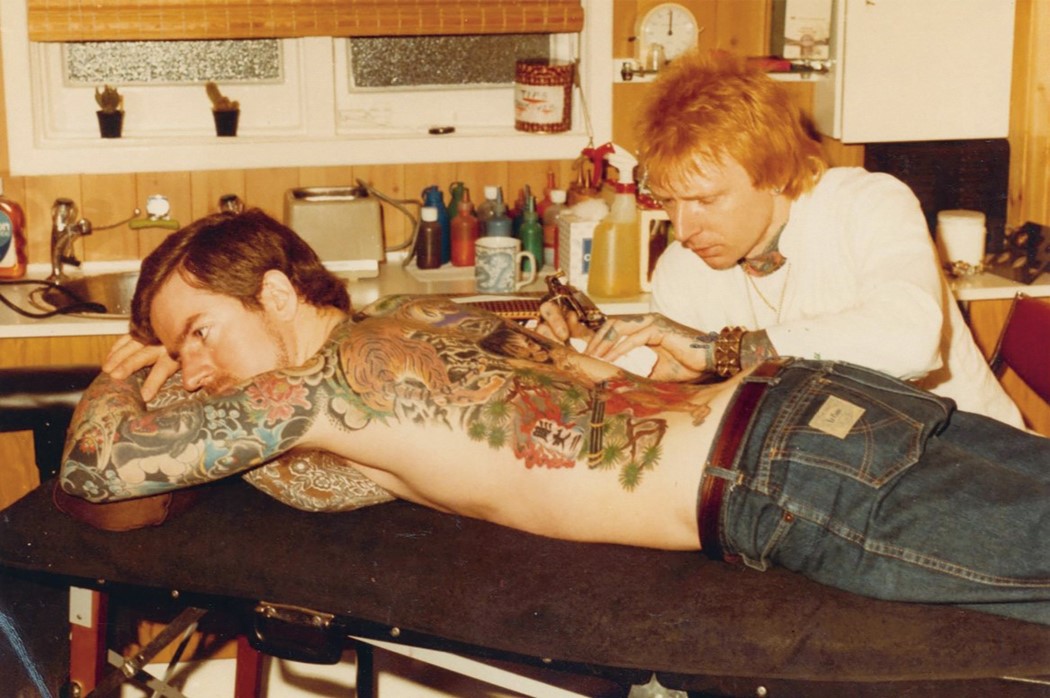Meeting Legendary ‘Den of Skulls’ Tattooist George Bone
- TextDan Crowe
- TextJack Watts
Speaking to Dan Crowe and Jack Watts for the new issue of TTTism Magazine, Bone reveals the story behind his first tattoo and reflects on the art form’s past, present and future
Taken from TTTism Magazine Issue 3, out July 30:
George Bone has been tattooing at his shop, Den of Skulls, in Hanwell, West London since 1973. He can turn his hand to all styles, but chooses to specialise in large scale Japanese pieces. Not only does George embody the history of London tattooing; he is at the forefront of its future. It’s one thing to know somebody that’s been in the trade for as long as he has, but another thing completely to encounter someone that’s still so in love with tattooing after all of these years. The mystique and allure of what tattoo shops used to be is held inside the walls of Den of Skulls – it’s indescribable; the only way to truly understand it is to go there yourself. We feel extremely lucky to consider George a huge influence and inspiration as well as a dear friend.
What was your first tattoo? Who did it and can you describe the experience?
My first tattoo was done by Cash Cooper in Piccadilly Circus. Cash did it in the basement of the arcade, next to the shooting gallery in a tiny little corner – like a cave solid with designs, all smoky, dirty, and rotten.
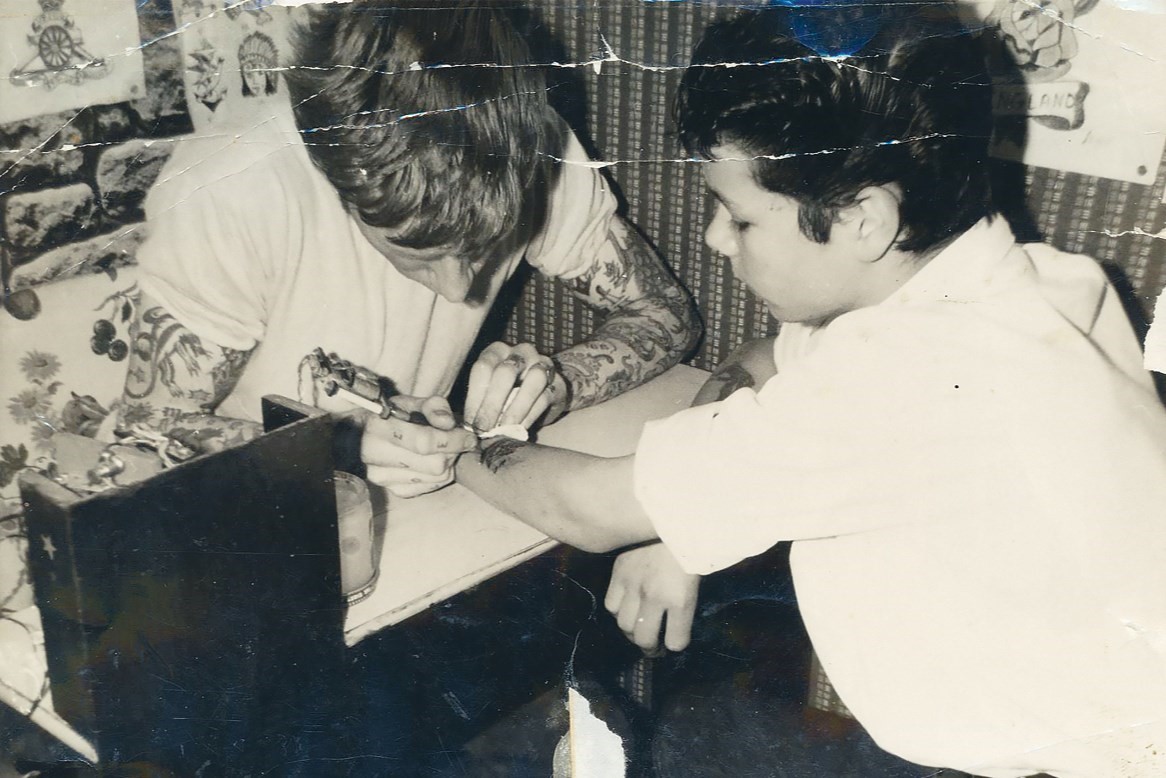
When I was 15, I got a job in a factory. A guy that worked there had a bird on his hand; he told me Cash had done it and gave me the address. I left Saturday morning, got there at 10am to find a que already formed outside. Cash would do two tattoos, go out, and come back to do another two before leaving again. I realised later that he was doing enough tattoos to buy a bottle of booze and then he’d drink that until he’d done another two. I finally got tattooed at 10:00 at night, after a 12-hour wait. I asked for a bouquet of flowers and a swallow with ‘mum and dad’ written. He changed the bouquet of flowers to a rose and before I knew it, the tattoo was done. Cash would do the outline and then another guy would fill it in. When I got home that night, I showed my mum and dad and luckily they didn’t seem to mind. I always say, it’s my mum’s fault that I got into it. When I was really young, I saw pictures of Japanese tattoos in a magazine called Tit Bits. I told my mum that I was going to get a tattoo when I was 40. I only waited until I was 15.
Once you’ve had one done you get the bug. I’d heard of Jack Zeek and I went to see him. I got a skull, a snake, and later went back to Cash Cooper a few more times. He was always drunk. He had a bucket on the floor for piss and a bucket next to it filled with drinking water. There’s a story that he had some sailor come in once who fainted. Cash Cooper offered him a drink of water but the sailor took a drink from the wrong bucket!
One of the last times I got tattooed by Cash, I paid 35 bob for a pinup: she had a red dress with her legs showing. When it was done, I realised that part of the hair was black and part of it was red and that she had an extra knee on her shin. I went back to have it sorted the following Monday. I told him, ‘She’s got two different colours there [which is fashionable now, ha!] and an extra knee.’ Cash responded, ‘That’s not my work boy. I can put it right but it’ll cost you 35 bob.’
We became quite good friends. Me and my wife Pat used to go for tea with his mum. He moved from the arcade to a little handbag shop in Soho and by then I was going to Jack Zeek a lot.
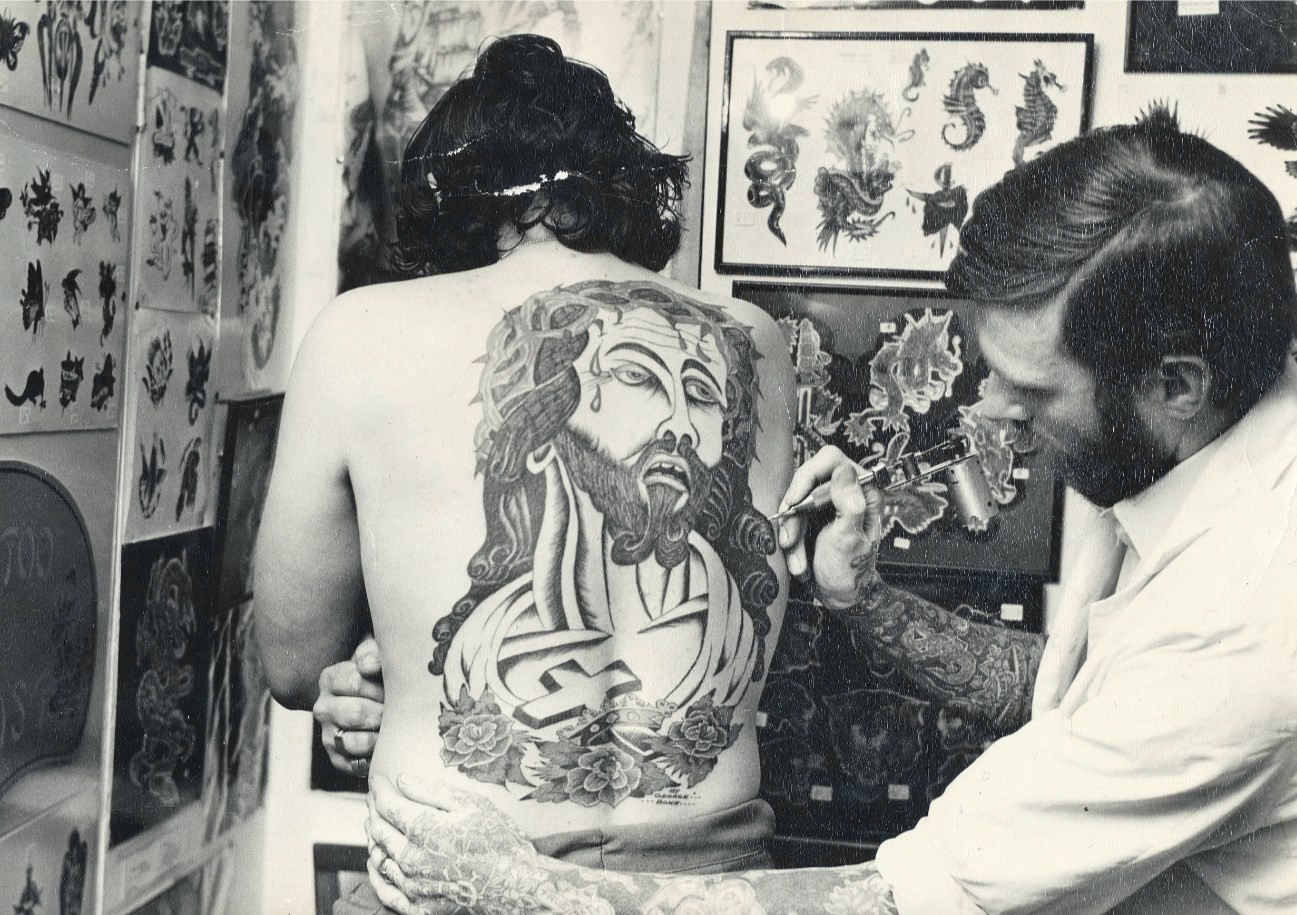
How did you start tattooing? Who inspired you?
I started when I was 16 years old. I saw an advert for a tattoo machine in Aylesbury. The owner was a weird old boy; his front room covered with old designs, he showed me these tattoo machines made of wood. I bought one off of him and started tattooing myself in my bedroom using any tips I’d picked up watching Cash and Jack tattoo me. My dad made me a little bench and my bedroom soon looked like a tattoo shop.
At that point, I was going to Rich Mingins in Harlesden a lot – he was the best in London. He tattooed in a little back room on a table by the window. I’ll never forget the album he had, full of lovely designs. Rich was a chain smoker – as he’d get to the end of one cigarette he’d light another one straight away. He was also a very quiet man – wouldn’t say a word, but I was spying on him all the time trying to pick up tips on how he worked. I never told him I tattooed but one time I went in there and he asked, ‘How’s your business then?’ So it turns out he knew all along. He died when he was 52 from lung cancer and his wife asked me if I wanted to buy all of his equipment. I couldn’t – at that time I was skint – but he had a big power pack, an ex-army one, so I bought that.
When I was going to Jack Zeek, he showed me how to make needles. He was quite open about it, not as secretive as the others. I was so impressed by Bill Skuse’s work; I wanted to go down there to meet him and Rusty, Bill’s wife. I came as a customer – we really got along and all became great friends. I picked out a lady head to have done but Bill said, “Pick something else – I’m useless with faces.” He taught me how to mix up colours, and helped me get into the Guinness Book of World Records for most tattooed man.
Coming towards the late 70s and early 80s, Ed Hardy came on the scene and changed everything with his amazing artwork. By that time, I was starting to do Japanese work. As we came into the 80s, I went on to more macabre stuff with a Victorian look.

Have you ever made your own machines?
I’ve never actually made the frames, but sourcing the parts and assembling them – I’ve done that loads. Even when I buy new machines, I rarely use them as is; I always adjust them to my liking.
Tattooing has seen many changes in the last 50 years. Do you miss anything about tattooing’s earlier moments? What are some of the positive aspects of these changes?
Years ago, tattooists were such characters – like circus people: scary but so funny. I must admit, I do miss the showmanship in tattooing back then. That was because there were only a few of us. No one really looks at the boards of flash on the wall anymore. They come in with their own designs that loads of people already have. Every shop had an atmosphere back then and now many have lost the mystique of it.
The number one positive change is the hygiene. It was different back then: the first time I had a new needle used on me was with Ed Hardy. The artwork has changed as well and is very good at times. But it can also be too good, and at that point it’s not a tattoo, is it? It’s a work of art. A piece can be absolutely amazing, but it’s not a tattoo. When you see a pirate ship with a skull and crossbones that’s imperfect – that’s the way it should be. A lot of recent tattoos are soft and don’t last, unlike the tattoos I like which you’ll take to the grave. I appreciate old tattoos that look like tattoos. This is why I love Japanese work. It’s in your face and it ain’t going nowhere. You can see it from across the street.
I was earning more in the 80s than I do now because there weren’t so many shops. I was working more off the wall than by the hour. I think tattooing has gone too mainstream now – too many TV programs. People used to be shocked by tattoos and now they aren’t so much.

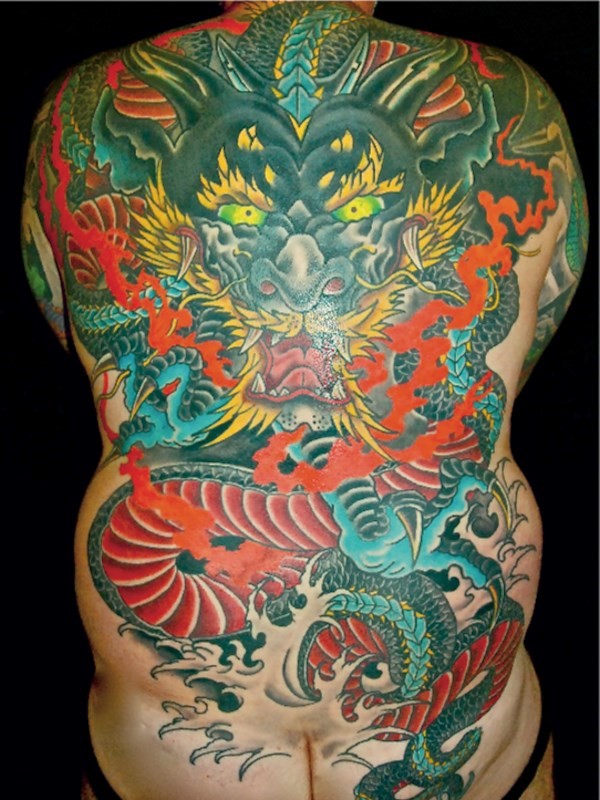
With fewer shops back in the 60s and 70s, were you able to travel and tattoo?
Not many people did that then. Jack Zeek would tattoo at Cooper’s shop, but that’s about it. It wasn’t like it is now with guest spots – that’s a new thing. Before, you had your own shop and you stayed there. Back in the day, if anyone walked into the shop I could tell where they’d been. Every tattooist had their own style, whereas you can’t tell now. Before my time, there would be meetings in pubs with tattooists. It was only later that conventions happened.
When was the last time you were tattooed?
In Borneo, eight years ago or maybe more. The first Borneo convention was there, so me, Lal Hardy, Filip Leu, Tin Tin, and Naresh Bhana went over to work it. There was a big row between the two brothers running the convention, so it didn’t end up happening. All of us still had a trip to the longhouses planned, so we went down there. There was an old boy there that was a tattooist and Naresh wanted to get one with the original tools, but the old boy was too shaky and couldn’t see. We met two other locals who had a shop, so we all got tattooed with the traditional tapping method. We didn’t regret missing the convention at all! We had a great time!
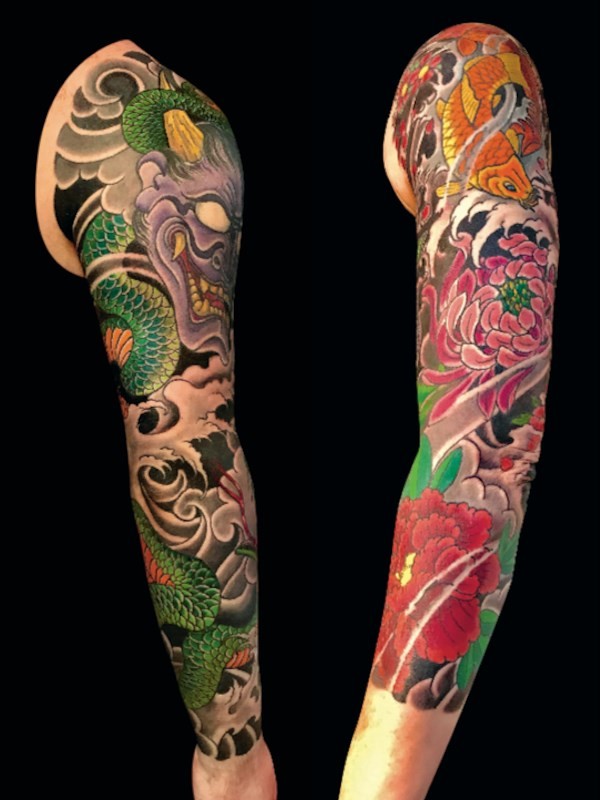
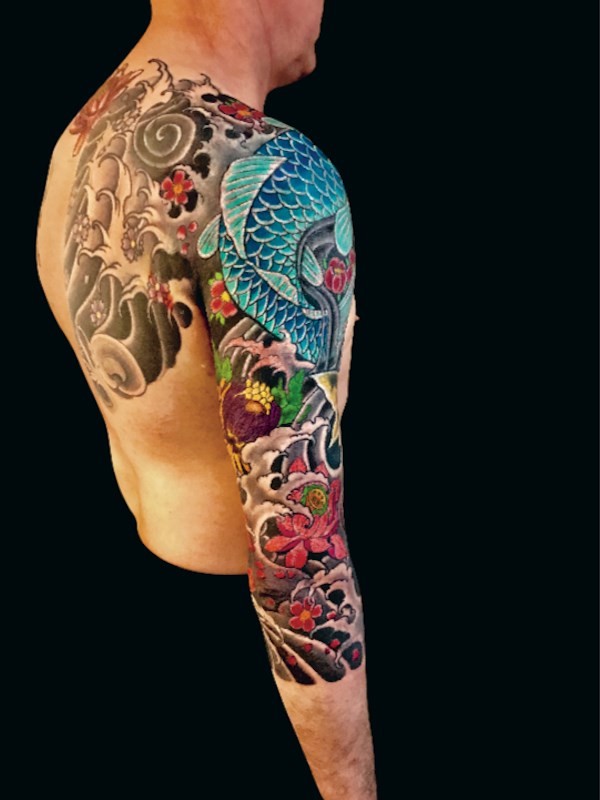
If there was anyone you’d get tattooed by now, who would it be?
I’ve always fancied one by Filip Leu; I’ve always liked his stuff. I would get a dragon, I think – I love his dragons.
Where do you see tattooing going in the next ten years?
People asked me that question in the 80s and even then I said, “It can’t go no further.” If it does, it will get to a point where it gets oversaturated and then people will turn away from it. I don’t think that tattooing will ever die out; it’s just got mad now – you’ve even got people with no love for the trade doing it in their houses, buying machines off the internet, carving people up, and spreading infection. I always say that I’m glad I’ve been in the trade during the years I have, because I think you can’t replace those years.
You can find George at Den of Skulls, 58 Boston Road, Hanwell, London W7 3TR. 020 8579 0831.
TTTism Magazine Issue 3 is out July 30. Pre-order a copy here
